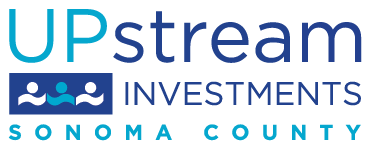Youth Connections
Youth Connections uses a comprehensive and integrated approach to ensure that young adults who have dropped out of school are prepared to achieve their educational, career and life goals.
Youth Connections, in partnership with CalServes, John Jordan Foundation, John Muir Charter School, Sonoma County Office of Education, and other service providers, offers our community’s youth four proven interventions:
High school completion through an alternative education model incorporating group/individual support, experiential learning, and tutoring.
Work readiness preparation through career development workshops, including occupational training with certification, internships, and leadership development.
CalServes’ college and career mentoring curriculum delivery, including evidence-based curriculum from GEAR Up and AVID.
Entrepreneurial development focused on micro-enterprise business development curriculum delivery and certification, financial literacy and loan readiness access.
Accepted to the Portfolio: December 2014
Target Outcomes
Short Term Outcomes
- Youth improve attitude towards high school diploma completion and post-secondary options
- Youth make progress towards high school diploma completion
- Completers have an increase in knowledge of college and career exploration
- Youth enter employment opportunities and/or post-secondary education
- Youth participation in enhanced support services improves progress towards high school completion and transitions to college or career
- Youth cultivate soft skills and life skills through leadership development
- Youth increase in their knowledge in entrepreneurial opportunities
- Youth understand their 5 strongest strengths in academics, career, and personal success through StrengthsQuest™ assessment.
Long Term Outcomes
- Increase the number of post-secondary and vocational training graduate
- Increase in local civic engagement and social justice awareness
- Participants become mentors in a local mentorship program
- Increase in the number of people earning a living wage to support families
- Decrease in youth and adult arrests and incarceration
- Decrease unemployment rates
- Decrease in child abuse rates
- Decrease dependency on financial assistance programs
- Increase in the number of stable healthy families
Target Population
Demographics
- Transitional Age Youth (16 - 24)
Service Area
- Central (District 3)
Information
Program Funders
Many thanks to the following funders for making this program possible.
Local Funders
- John Jordan Foundation
- John Muir Charter Schol
- Sonoma County Office of Education

 Translate
Translate